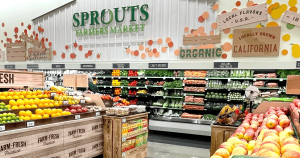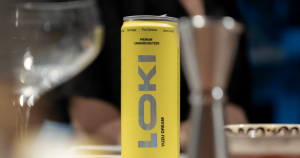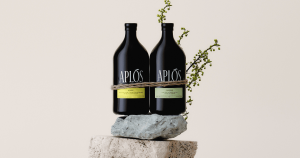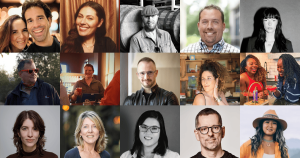“What makes something worth it?”
It’s a question we ask ourselves often in this space—whether as brand founders or consumers ourselves. Lately, it’s been top of mind again in the US market. The cost of living is rising, people are watching their budgets, and alcohol alternatives are, more than ever, part of the pricing conversation.
At the same time, headlines are piling up about tipping fatigue, $25 martinis, and general sticker shock in the hospitality industry. And while non-alcoholic beverage prices have risen less than inflation overall, that doesn’t mean people aren’t feeling the squeeze.
So, how can non-alc brands communicate their value to hesitant consumers? And, on the flip side, how can our culture shift its idea of what value really is?
Price Creep and the Beverage Industry
Let’s get one thing out of the way: yes, drink prices are going up. But maybe not for the reasons you think.
A 2024 NBC report shows alcohol prices rose only 1.8% year over year, compared to 2.7% overall inflation. Over the longer arc, from 2019 to 2024, booze costs are up 15%, still trailing the 23% consumer average.
And yet, even as prices lag inflation, the perception that a night out has become prohibitively expensive is very real. Especially when dinner for two with a couple of drinks can easily top $150 in major cities. The National Restaurant Association reported menu prices jumped 7.4% in 2022 alone.
Now factor in tipping fatigue, shrinking pour sizes, and recession fears, and you’ve got a perfect storm for price scrutiny.
What You’re Really Paying For
To understand pricing in the non-alcoholic category specifically, you must look behind the bar and into the production room.
Take BOLLE, a premium non-alcoholic wine producer we’ve featured on Dry Atlas. Their pricing reflects small-batch production, world-class dealcoholization equipment, and a proprietary refermentation process that rebuilds wine’s complexity after the alcohol is removed. In other words: they’re doing more, not less, to bring a satisfying product to life.
And unlike global spirits conglomerates with massive ad budgets and entrenched distribution, most non-alcoholic brands are still bootstrapping their way into bars and bottle shops, shouldering all the costs of a traditional CPG brand with none of the old infrastructure.
It’s a different level of investment. And the ingredients often aren’t cheap either.
Crafting Without A Crutch
One thing we don’t talk about enough is how hard it is to create a truly compelling beverage without alcohol as a crutch.
Alcohol isn’t just intoxicating—it’s a powerful flavor carrier. It adds body, depth, and structure. Take it away, and you’re forced to rebuild that all from scratch. That means sourcing high-quality botanicals, balancing acidity and bitterness, and often blending a dozen-plus ingredients just to mimic the arc of a single cocktail.
So when someone asks why a non-alcoholic drink is priced like a traditional one, the honest answer is: because it takes just as much work—and often more—to get it right.
Back to the Value Question
Of course, none of this exists in a vacuum.
The cost of living has soared. In that context, even a $9 mocktail can feel indulgent. When those who are already hesitant to spend their discretionary income on a beverage that comes with intoxicating effects, those “What’s the point if you don’t get drunk?” arguments seem a little more prevalent.
Derek Brown put it quite succinctly in Wine Enthusiast: “I cannot defend the cost of non-alcoholic cocktails to someone who goes to a bar with the sole desire for inebriation, but then again, neither can that inebriate claim their concern is about quality cocktails, at least not entirely. If you want a good cocktail, you’re going to have to pay for it. The same goes for a good non-alcoholic cocktail.”
But that’s where the mental shift comes into play; there isn’t a 1:1 comparison. At least, not anymore. Non-alcoholic beverages aren’t all trying to justify their value by mimicking alcohol. Many offer something else of value: craft, care, and complexity.
Letting the Data Speak
Despite pricing resistance, the non-alc category is growing. People are seeking options that feel premium but align with a new definition of “worth it”: drinks that support mental clarity, social connection, or a sense of ritual, without the downsides of alcohol.
Still, education is a major barrier. According to a 2023 Mintel study, 73% of US consumers believe non-alcoholic drinks should cost less than alcoholic ones. Only 23% are willing to pay the same, and nearly 1 in 5 people aren’t sure how to value non-alc options at all.
This is where brand education comes into play. When people don’t understand the “why,” they’re less likely to experiment.
Build a Category Worth Investing in
We’ll be the first to say: price matters. No one wants this category to become inaccessible. But there’s a difference between gatekeeping and transparency.
Consumers deserve to know that behind every $15 non-alc cocktail is a team rethinking what makes a beverage good. That for many small producers, these aren’t luxury markups—they’re the costs of making something actually special. And that, in a market long ruled by ethanol, building something better from scratch takes more than just removing the alcohol.






